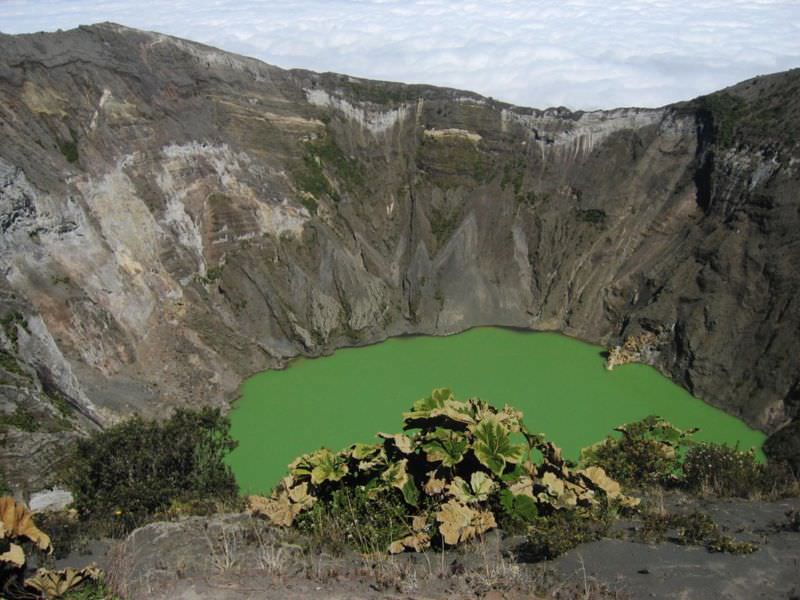[/caption]
Some craters are formed by a meteor impact, when a space rock strikes the Earth. And other craters are volcanic in origin. A volcano crater is a circular depression around a volcanic vent. This is where the lava, ash and rock erupt out of a volcano. In most situations, the volcano crater is located at the top of the volcano.
Think of a classic cone-shaped volcano, with steep sides and a slightly flattened top. If you could climb up to the top of the volcano and peer over the edge, you would look down into the volcano crater. And when the volcano does erupt, the material comes out of this volcano crater.
But not all volcano craters are found at the top of the volcano. They can also appear on the flanks of large volcanoes, when side vents reach the surface and erupt. These are known as flank craters, while the crater on top is called a summit crater. The volcano crater will often fill up with water and create a crater lake.
One kind of eruption creates a crater without a volcanic cinder cone at all: a phreatic eruption. This is a situation where magma rises through water-saturated rocks and causes steam to build up under the surface. The pressure from all the steam causes the rock to explode outward and create a volcanic crater. These can be strange to discover as they often appear in plains, far away from any other obvious volcanoes.
When the ground depresses down because a volcano’s magma chamber has been emptied, this is actually known as a caldera, and not a volcano crater.
We have written many articles about volcanoes for Universe Today. Here’s an article about types of volcanoes, and here’s an article about cinder cone volcanoes.
Want more resources on the Earth? Here’s a link to NASA’s Human Spaceflight page, and here’s NASA’s Visible Earth.
We have also recorded an episode of Astronomy Cast about Earth, as part of our tour through the Solar System – Episode 51: Earth.

